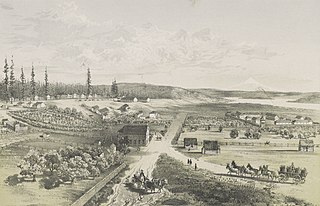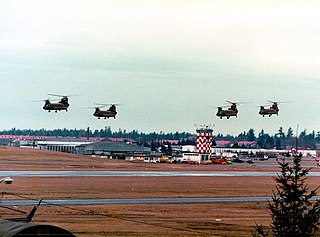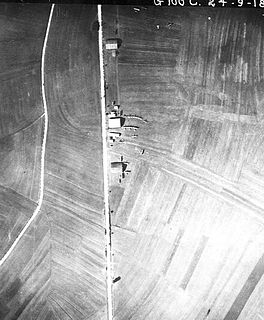
Wheeler Army Airfield, also known as Wheeler Field and formerly as Wheeler Air Force Base, is a United States Army post located in the City & County of Honolulu and in the Wahiawa District of the Island of O'ahu, Hawaii. It is a National Historic Landmark for its role in the 7 December 1941 Japanese attack on Pearl Harbor.

Valery Pavlovich Chkalov was a Soviet and Russian test pilot and a Hero of the Soviet Union (1936).

The term Link Trainer, also known as the "Blue box" and "Pilot Trainer" is commonly used to refer to a series of flight simulators produced between the early 1930s and early 1950s by the Link Aviation Devices, Inc, founded and headed by Ed Link, based on technology he pioneered in 1929 at his family's business in Binghamton, New York. During World War II, they were used as a key pilot training aid by almost every combatant nation.

Roosevelt Field is a former airport, located 2.3 miles (3.7 km) east-southeast of Mineola, Long Island, New York. Originally called the Hempstead Plains Aerodrome, or sometimes Hempstead Plains field or the Garden City Aerodrome, it was a training field for the Air Service, United States Army during World War I.

Imperial War Museum Duxford is a branch of the Imperial War Museum near Duxford in Cambridgeshire, England. Britain's largest aviation museum, Duxford houses the museum's large exhibits, including nearly 200 aircraft, military vehicles, artillery and minor naval vessels in seven main exhibition buildings. The site also provides storage space for the museum's other collections of material such as film, photographs, documents, books and artefacts. The site accommodates several British Army regimental museums, including those of the Parachute Regiment and the Royal Anglian Regiment.

Fort Vancouver National Historic Site is a United States National Historic Site located in the states of Washington and Oregon. The National Historic Site consists of two units, one located on the site of Fort Vancouver in modern-day Vancouver, Washington; the other being the former residence of John McLoughlin in Oregon City, Oregon. The two sites were separately given national historic designation in the 1940s. The Fort Vancouver unit was designated a National Historic Site in 1961, and was combined with the McLoughlin House into a unit in 2003.

Fort Sill is a United States Army post north of Lawton, Oklahoma, about 85 miles southwest of Oklahoma City. It covers almost 94,000 acres (38,000 ha).

Tuskegee Airmen National Historic Site, at Moton Field in Tuskegee, Alabama, commemorates the contributions of African-American airmen in World War II. Moton Field was the site of primary flight training for the pioneering pilots known as the Tuskegee Airmen, and is now operated by the National Park Service to interpret their history and achievements. It was constructed in 1941 as a new training base. The field was named after former Tuskegee Institute principal Robert Russa Moton, who died the previous year.

Gray Army Airfield, also known as Gray AAF, is a military airfield located within Joint Base Lewis-McChord near Tacoma, in Pierce County, Washington, United States.

College Park Airport is a public airport located in the City of College Park, in Prince George's County, Maryland, United States. It is the world's oldest continuously operated airport. The airport is located south of Paint Branch and Lake Artemesia, east of U.S. Route 1 and the College Park Metro/MARC station and west of Kenilworth Avenue.

Sanford Seacoast Regional Airport is a public airport located four miles (6 km) southeast of the central business district of Sanford, a town in York County, Maine, United States. The airport operated as Naval Auxiliary Air Facility Sanford supporting operations of Naval Air Station Brunswick from 15 April 1943 until 1 February 1946. This airport is now publicly owned by Town of Sanford.

The Tupolev ANT-25 was a Soviet long-range experimental aircraft which was also tried as a bomber. First constructed in 1933, it was used by the Soviet Union for a number of record-breaking flights.

The USS Hornet Museum is a museum ship, located on the southernmost pier of the former Naval Air Station Alameda in Alameda, California, US.

Marshall Army Airfield (MAAF) is a military airfield located on Fort Riley, Kansas. It was opened in 1921. The primary mission for MAAF is to provide fully integrated fixed base helicopter operations for the Combat Aviation Brigade.

Daniel Field is a public use airport located one nautical mile (2 km) west of the central business district of Augusta, a city in Richmond County, Georgia, United States. It is owned by the City of Augusta and operated by the General Aviation Commission. This airport is included in the National Plan of Integrated Airport Systems for 2011–2015, which categorized it as a general aviation facility.

The 106th Air Refueling Squadron is a unit of the Alabama Air National Guard 117th Air Refueling Wing. It is assigned to Birmingham Air National Guard Base, Alabama and is equipped with the KC-135R Stratotanker aircraft.

Henry Post Army Airfield is a military use airport located at Fort Sill in Comanche County, Oklahoma, United States. This military airport is owned by United States Army. Established as Post Field in 1917, it was one of thirty-two Air Service training camps established after the United States entry into World War I in April 1917.

Pearson Field also once known as Pearson Airpark, is a city-owned municipal airport located one mile (2 km) southeast of the central business district of Vancouver, a city in Clark County, Washington, United States.

Vavincourt Aerodrome, was a temporary World War I airfield in France. It was located 0.5 miles (0.80 km) south of Vavincourt, in the Meuse department in north-eastern France.

The Pearson Field Education Center delivers experiential aviation based science, technology, engineering and math (STEM) programs for young people ages kindergarten through 12th grade (K-12) on historic Pearson Field, Vancouver, Washington. Knowledge and experience gained at PFEC provides a foundation for young people’s further education and careers in STEM based fields, including aviation, while instilling an appreciation for those that have gone before them and the history of Pearson Field. PFEC's mission is "Through aviation, we inspire youth to pursue education and careers in STEM fields, while instilling an appreciation for the people, events, and innovations of historic Pearson Field."




















